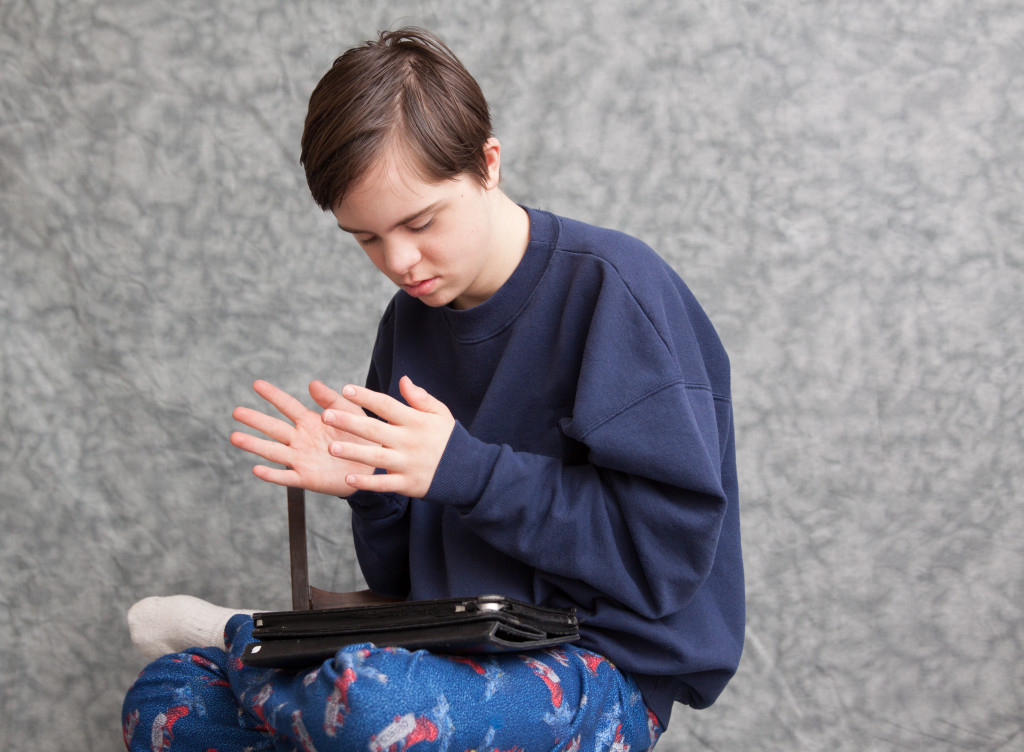Today, technology plays a vital role in most people’s lives, including those with disabilities. People with disabilities often felt isolated from the mainstream world in the past. However, technology has now made it possible to connect with others. It also allowed them to participate in activities that were once out of reach.
According to World Health Organization, one billion people worldwide have some form of disability. It represents a lot of people. It’s only natural that people with disabilities want to find ways to use technology to improve their lives.
This is why developers and tech experts around the globe are working on creating new technologies and gadgets that can help people with disabilities in their everyday lives. Here are some examples of how technology is helping people with disabilities:
1. Communication Device
Technology has come a long way in recent years, and it has had a profound impact on the lives of people with disabilities. One of the most important ways technology has helped is by providing communication devices that allow people to express themselves.
For example, there are now text-to-speech converters that can translate typed text into spoken words, making it possible for people who cannot speak to communicate with others. In addition, some devices can convert spoken words into text, making it possible for people who are deaf or hard of hearing to follow conversations.
As a result, communication devices have helped break down barriers and make it easier for people with disabilities to interact with the world around them.
2. Internet Use
The internet is a vast information resource, and it’s now more accessible than ever before. Thanks to advances in technology, people with disabilities can now browse the internet without relying on someone else to do it for them. One good thing about progress on the internet today is how developers design web pages to cater to a more diverse range of users.
For example, home healthcare digital marketing companies design websites and landing pages that people with disabilities can easily navigate. Proper font sizes, colors, and spacing make it easier for people with visual impairments to read text on web pages. Meanwhile, news outlets and magazine websites can now provide audio versions of their content so that people who are deaf or hard of hearing can still access the information.
The internet has a lot to offer, and thanks to technology, people with disabilities can now enjoy its many benefits.
3. Assistive Technology
Assistive technology refers to devices or software designed to help people with disabilities in their everyday lives. There are assistive technologies for various activities, including communication, mobility, and self-care.
For example, some devices can help people with paralysis type on a computer or operate a wheelchair. Some devices can allow people who are blind or have low vision to read text or identify objects. And there are assistive technologies that can help people with hearing impairments to communicate with others or follow conversations.
Assistive technologies have helped improve people’s lives with disabilities by giving them greater independence.

4. Employment Opportunities
Technology has also positively impacted employment opportunities for people with disabilities. In the past, many employers were reluctant to hire people with disabilities. That’s because they were concerned about their ability to do the job.
However, thanks to advances in technology, employers can now take advantage of the many skills and talents that people with disabilities offer. For example, there are now various computer software programs that can help people with disabilities do their work.
In addition, many employers are now using video conferencing technologies to interview job candidates, which has made it easier for people with disabilities to apply for jobs. As a result of these changes, people with disabilities are now finding it easier to get hired for jobs they are qualified for. This also impacts employment culture in different industries.
5. Access to Education
People with disabilities often face barriers when it comes to accessing education. In the past, many schools couldn’t accommodate the needs of students with disabilities.
However, this is no longer the case, thanks to advances in technology. There are now a variety of assistive technologies that can help students with disabilities to participate in the classroom.
For example, assistive technologies can help students who are blind or have low vision to read text or follow along with classroom activities. There are also assistive technologies that can help students with hearing impairments communicate with their classmates and teachers.
Thanks to these advances, people with disabilities can now pursue their educational goals more efficiently.
Technology has had a positive impact on the lives of people with disabilities. It has helped improve access to education, employment opportunities, and assistive technologies. It has also made it easier for people with disabilities to communicate and participate in the world around them. Thanks to technology, people with disabilities can now enjoy greater independence and inclusion in society.

